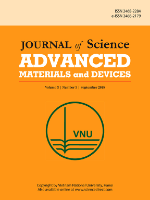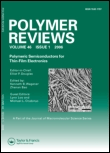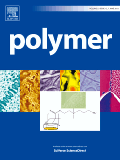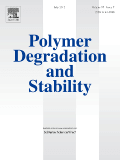
CELLULOSE
Scope & Guideline
Innovating materials science through cellulose applications.
Introduction
Aims and Scopes
- Cellulose Extraction and Modification:
Research on various methods to extract cellulose from natural sources and the subsequent chemical modifications to enhance its properties for specific applications. - Nanocellulose Applications:
Studies focused on the production and application of nanocellulose in fields such as biomedicine, food packaging, and sustainable materials. - Biocomposites and Biomaterials:
Development of cellulose-based composites that integrate other natural or synthetic materials to create sustainable, high-performance products. - Environmental Applications:
Exploration of cellulose and its derivatives in environmental contexts, such as wastewater treatment, pollution control, and biodegradable materials. - Functional Textiles:
Innovation in textile applications involving cellulose, including antimicrobial treatments, flame retardancy, and UV protection. - Thermoplastic and Biodegradable Materials:
Research on cellulose as a component in thermoplastic materials aimed at reducing reliance on fossil fuels and enhancing biodegradability. - Advanced Characterization Techniques:
Utilization of cutting-edge techniques for the characterization of cellulose structures and properties at the nanoscale.
Trending and Emerging
- Sustainable and Green Chemistry:
There is a growing emphasis on environmentally friendly processes for cellulose extraction, modification, and application, aligning with global sustainability initiatives. - Smart Textiles and Wearable Technology:
Research is increasingly focused on integrating cellulose into smart textiles, enhancing their functionality with features such as sensing capabilities and thermal management. - Nanotechnology and Nanomaterials:
The application of nanotechnology in cellulose research is trending, with studies investigating nanocellulose for use in high-performance materials and biomedical applications. - Biodegradable and Biocompatible Materials:
There is a surge in interest in developing biodegradable materials from cellulose for use in packaging, medical devices, and environmentally friendly products. - Cellulose in Energy Applications:
Emerging research explores the use of cellulose and its derivatives in energy storage and conversion technologies, particularly in the development of bio-based batteries and supercapacitors. - Functionalization and Composite Development:
Innovative approaches to functionalize cellulose and develop composites that integrate cellulose with other materials for enhanced performance are increasingly common.
Declining or Waning
- Traditional Pulping Processes:
Research on conventional pulping methods is declining as the focus shifts towards more sustainable and environmentally friendly alternatives, such as enzymatic and bio-based processes. - Petroleum-based Cellulosic Materials:
Interest in petroleum-derived cellulose products is waning in favor of bio-based materials that align with sustainability goals. - Single-component Cellulose Applications:
Studies solely focused on cellulose without considering its composites or blends are less frequent, as multifunctional materials gain prominence. - Basic Cellulose Chemistry:
Basic research on cellulose chemistry is becoming less common as applied research and interdisciplinary approaches take precedence, focusing on practical applications.
Similar Journals

Journal of Science-Advanced Materials and Devices
Advancing Materials Science Through Open Access InnovationJournal of Science-Advanced Materials and Devices is a leading open-access journal published by Vietnam National University, dedicated to advancing the field of materials science through cutting-edge research and innovative developments. Since its inception in 2016, this journal has become a pivotal platform for sharing insights and discoveries in various subfields, including biomaterials, ceramics and composites, and electronic, optical, and magnetic materials. With impressive quartile rankings, including Q1 across multiple categories in 2023, and a notable Scopus ranking placing it in the top 15th percentile for ceramics and composites, it highlights the journal’s influence and prestige within the global academic community. Open Access since its launch, the journal aims to facilitate unrestricted dissemination of scholarly work, empowering researchers, professionals, and students to engage with the latest advancements. The Journal of Science-Advanced Materials and Devices is vital for those seeking high-quality contributions that influence both theoretical understanding and practical applications in the ever-evolving landscape of materials science.

JOURNAL OF POLYMER SCIENCE
Advancing the Frontiers of Polymer InnovationJOURNAL OF POLYMER SCIENCE, published by WILEY, is a premier, open-access journal dedicated to advancing the field of polymer science and its applications. With an ISSN of 2642-4150, it offers a platform for high-quality research and innovative ideas, contributing significantly to the understanding of polymaterials and their functionalities. The journal is recognized for its exceptional impact within various categories, consistently achieving Q1 rankings in Materials Chemistry, Physical and Theoretical Chemistry, and Polymers and Plastics, demonstrating its influential presence in the academic community. As of 2023, it holds a distinguished position in Scopus rankings, underscoring its relevance and rigorous peer-review process. By facilitating open access to vital research findings, the JOURNAL OF POLYMER SCIENCE plays a crucial role in fostering collaboration and knowledge transfer among researchers, professionals, and students, paving the way for innovative developments in polymer applications and materials science.

Materials Science-Medziagotyra
Fostering Collaboration in the World of Materials ScienceMaterials Science-Medziagotyra is a prominent peer-reviewed journal dedicated to the field of materials science, published by Kaunas University of Technology in Lithuania. Since its transition to an Open Access model in 2012, it has facilitated broad dissemination of research findings, enhancing accessibility for researchers and professionals worldwide. This journal is indexed in Scopus and has consistently contributed to the academic community with a focus on innovative materials and their applications, ranking in the Q3 category of Materials Science (miscellaneous) as of 2023. With the responsibility of synthesizing substantial research from 2008 through 2024, Materials Science-Medziagotyra aims to bridge gaps in material research while fostering collaboration among scientists, students, and industry leaders. Its commitment to quality and rigor in scientific discourse underscores its relevance and importance in advancing the field.

ADVANCES IN POLYMER TECHNOLOGY
Transforming Research into Real-World Applications.ADVANCES IN POLYMER TECHNOLOGY is a premier open-access journal that has been at the forefront of innovation in the field of polymer science and engineering since its inception in 1981. Published by WILEY-HINDAWI, this journal serves as a vital platform for researchers, professionals, and students alike, facilitating the dissemination of cutting-edge research and applications in chemical engineering, organic chemistry, and polymers and plastics. With an impact factor that signifies its relevance and quality, the journal has achieved notable rankings, including Q2 in Chemical Engineering, and ranks within the top 30% of its category in multiple disciplines as of 2023. ADVANCES IN POLYMER TECHNOLOGY has embraced open-access publishing since 2019, ensuring that research findings are widely available to the global academic community. With its comprehensive coverage of topics related to polymer technology, this journal not only fosters scholarly exchange but also aims to bridge the gap between fundamental research and practical applications, thereby contributing significantly to advancements in materials science.

Polymer Reviews
Illuminating the path of polymer research.Polymer Reviews, published by Taylor & Francis Inc, is an esteemed journal dedicated to the intricate and evolving field of polymer science. With its ISSN 1558-3724 and E-ISSN 1558-3716, the journal has established a significant presence among researchers and practitioners alike, evidenced by its impressive categorization in the Q1 quartiles across multiple disciplines, including Biomedical Engineering, Materials Chemistry, and Renewable Energy. Since its inception in 2006 and continuing through 2024, Polymer Reviews has consistently aimed to advance the knowledge base of polymer applications and innovations, providing a platform for comprehensive review articles that stimulate further research and inspire practical solutions. The journal, ranking within the top percentile across several Scopus categories, underscores its impact and relevance in a rapidly developing scientific landscape. Though not an open-access journal, it remains a vital resource for those invested in the future of materials science and engineering.

POLYMER
Exploring Innovations in Materials ChemistryPOLYMER, an esteemed journal published by Elsevier Science Ltd, stands at the forefront of polymer science, presenting cutting-edge research that encompasses the realms of Materials Chemistry, Organic Chemistry, and Polymers and Plastics. With a remarkable impact factor reflecting its significance in the academic community, POLYMER has been a vital resource since its inception in 1960, contributing to a converged body of knowledge through to 2024. Rated Q1 in all relevant categories as of 2023, and boasting impressive Scopus rankings, this journal not only facilitates advanced discussions in polymer synthesis, characterization, and applications but also serves as a critical platform for collaborative research among scholars, professionals, and students. While it offers content primarily via subscription, POLYMER remains dedicated to fostering innovation and excellence in the field, making it an essential read for anyone passionate about polymer science.

Materials Today Nano
Empowering Knowledge in Nano-Materials for Global ImpactMaterials Today Nano, published by Elsevier, is a premier academic journal dedicated to the forefront of nano-materials research, encompassing innovations and advancements in biomaterials, condensed matter physics, electronic, optical, and magnetic materials, as well as materials chemistry. With an impressive Q1 ranking across multiple categories, including biomaterials and materials chemistry, this journal serves as a essential platform for researchers, professionals, and students aiming to contribute to and stay informed on cutting-edge developments that push the boundaries of materials science. Its open access model allows for wider dissemination of high-impact findings, ensuring that the research reaches a global audience. Operating from the United Kingdom, Materials Today Nano plays a vital role in fostering interdisciplinary collaboration and advancing scientific understanding in this rapidly evolving field.

Accounts of Materials Research
Advancing the frontiers of materials science.Accounts of Materials Research is a premier journal published by the American Chemical Society, focusing on the multidimensional field of materials science. With a robust impact factor and a commitment to open-access research, it serves as a vital platform for leading-edge discoveries from 2020 to 2024. The journal has rapidly ascended to the top quartile in multiple categories, including Chemical Engineering, Materials Chemistry, and Polymers and Plastics, demonstrating its significant influence within the academic community. Recognized by Scopus as a key resource—with remarkable rankings that place it in the 95th percentile of its field—Accounts of Materials Research is devoted to publishing high-quality, innovative research that addresses critical challenges in materials development and implementation. This journal is essential for researchers, professionals, and students seeking to stay informed about the latest advancements and collaborative opportunities within the interdisciplinary landscape of materials science.

POLYMER BULLETIN
Advancing Knowledge in Polymer Chemistry and MaterialsPOLYMER BULLETIN is a prominent journal in the field of polymer science, published by SPRINGER in Germany. Established in 1978, this peer-reviewed journal focuses on the latest research and developments in polymer chemistry, materials science, and condensed matter physics, boasting a commendable impact factor indicative of its rigorous academic standards. With a Q2 ranking in multiple categories including Chemistry (Miscellaneous), Condensed Matter Physics, Materials Chemistry, and Polymers and Plastics, POLYMER BULLETIN serves as an essential resource for researchers, professionals, and students aiming to stay abreast of innovative findings and methodologies within these interdisciplinary landscapes. Although the journal does not currently offer open access, it provides invaluable insights and data that significantly contribute to the advancement of polymer science. For more information and to access published articles, visit the journal's page on the Springer website.

POLYMER DEGRADATION AND STABILITY
Fostering Collaboration in Polymer SciencePOLYMER DEGRADATION AND STABILITY is a prestigious peer-reviewed journal published by Elsevier Sci Ltd, focusing on the critical aspects of polymer degradation and stability, which are essential for advancing the field of materials science. With an impressive impact factor and categorized in the top tier (Q1) across several disciplines including Condensed Matter Physics, Materials Chemistry, Mechanics of Materials, and Polymers and Plastics, this journal serves as a vital platform for researchers and professionals dedicated to uncovering the intricacies of polymer behavior under various environmental conditions. Established in 1979 and converging until 2024, it contributes significantly to the scientific dialogue surrounding polymer lifecycle and durability, essential for innovations in engineering and technology. Although it is not an open-access journal, POLYMER DEGRADATION AND STABILITY ensures access to cutting-edge research, providing invaluable insights and fostering academic collaboration for students, researchers, and industry practitioners alike.